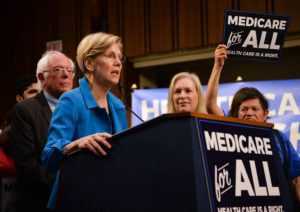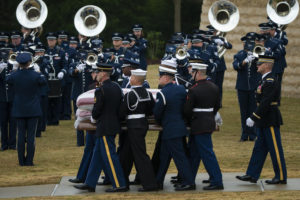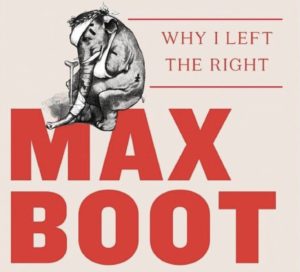The Real Charles Manson
Quentin Tarantino's "Once Upon a Time in Hollywood" offers a revisionist take on the California cult leader, but it's hardly the first. Charles Manson. (AP)
Charles Manson. (AP)
The 50th anniversary of the Manson family slayings have inspired a rash of new essays and retrospectives, and almost ubiquitous among them is the same basic premise: that the seven murders committed by Charles Manson’s cultists in August 1969 marked not just the “death of the ’60s” but the indefinite deferral of the dream they contained. From the very titles of the works exploring the family’s crimes to a new summer blockbuster starring Brad Pitt and Leonardo DiCaprio, this notion continues to dominate the public imagination.
“We tell ourselves stories in order to live,” Joan Didion writes in her seminal essay, “The White Album,” imposing “a narrative line upon disparate images” so as to adduce some clear moral or lesson from our experiences. In Didion’s recollection of the ’60s, memory may be kaleidoscopic, and events cannot be put in a linear order.
What is clear for Didion is that the gruesome violence of the Tate-LaBianca tragedy denoted the end point of the decade, the wages of a strange, unhinged time. Her recounting of the era centers upon the Manson slayings as the grim culmination of all that messy campus activism, dissolute rock musicians, black nationalism and strange new communes popping up like dandelions. In Didion’s telling, “no one was surprised” that five people had been slaughtered in Roman Polanski’s Benedict Canyon mansion—a curious note to strike about a crime that continues to shock to this day.
In the decades since its publication, the basic thesis of “The White Album” has become consensus. Manson, who died in prison in 2017, lives on as an Antichrist come to Los Angeles—the ultimate boogeyman to warn against the freak lifestyle of his time and place.
But this narrative doesn’t merely do a grave disservice to the Manson family’s victims by minimizing their suffering as the mere collateral of history. Conflating the likes of Tex Watson and Lynette “Squeaky” Fromme with the wider cultural revolutions of the era is itself a highly pernicious and dubious proposition, serving a largely reactionary interpretation of the crimes. Such a view not only does little to advance a meaningful understanding of the murders but validates a widespread hostility, then and now, toward the counterculture, as though it was the exclusive domain of a single, nightmarish guru.
This transformation of Manson, a barely literate career criminal, into the malevolent force responsible for ending an epoch, rests on a curious contradiction. In this version of events, Manson is a uniquely evil, ultraviolent force whose exploitation of the counterculture’s naivete ultimately destroyed a time of peaceful idealism and brotherly love. This is the case made in Quentin Tarantino’s “Once Upon a Time in Hollywood,” which revels in the innocence those murders allegedly destroyed.
Tarantino’s film prompts the question: Just how innocent was the age that preceded the Tate-LaBianca murders? Even the most cursory examination of the decade indicates that it was incredibly, unceasingly violent. For an essay purportedly about the ’60s, Didion’s “The White Album” ignores the most murderous Californian of the time, Richard Nixon. There is no mention of the Vietnam War and the wider savagery visited upon Southeast Asia. Meanwhile, she portrays the campus activists of the era as faintly ridiculous dead-enders engaged in “industrious self-delusion,” their ultimate motives seemingly unworthy of exploration.
Race riots, horrific carpet-bombing, the assassinations of Malcolm X, Martin Luther King and the Kennedys—these are just the period’s most recognizable acts of carnage. Brutality was the status quo, and most of it originated not from the panoply of militant activists associated with the ’60s but from a mainstream acting in the name of law and order. Police and security service action against the counterculture was endemic; from spying to dirty tricks to assaults on such activists as Abbie Hoffman, such efforts involved prominent, powerful reactionaries, including those in the White House.
Dark conspiracies were afoot. As journalist Tom O’Neill reveals in his new book, “Chaos: Charles Manson, the CIA, and the Secret History of the Sixties,” FBI COINTELPRO agents had successfully engineered the murders of two Black Panthers on the UCLA campus in 1969, using informants to prod a rival black nationalist group into the crimes. In May of that year, the California Highway Patrol, operating under then-Gov. Ronald Reagan, fired shotguns at dozens of students at the University of California at Berkeley, killing one and blinding another. That December, Black Panther leaders Mark Clark and Fred Hampton were killed in a Chicago police raid, with a wealth of evidence pointing to their extrajudicial murder.
By making the Manson family murders the fulcrum of her essay, Didion didn’t merely depoliticize the era; she recast history, however eloquently, to conform with her cultural beliefs as a stalwart Barry Goldwater voter. So if the popular understanding of the California cult has often been a cynical one, deployed selectively to sully the ’60s counterculture as inherently sinister, what can we learn from the tragedy? And what is the best way of understanding the seemingly incomprehensible events of August 1969?
The answers likely hold crucial lessons for 2019. Prosecutor Vincent Bugliosi’s description of Manson as a “right-wing hippie” in his best-selling account of the case, “Helter Skelter,” is largely accurate. Manson, a grifting former pimp, had no political ethos beyond perhaps his white supremacism, which only grew more pronounced after he was incarcerated. Indeed, the entire hippie phenomenon of 1969 was hardly as political as popular memory leads us to believe. As Hunter S. Thompson reported in his 1967 essay on San Francisco’s Haight-Ashbury, hippies were not the student activists who had roiled campuses around the country in the years before; they were apolitical waifs who retreated from the kind of confrontation the activism of the day entailed.
Manson once called himself “The Gardener” because he collected flower children. The nickname was unfortunately apt, as he largely preyed on teenage girls, some as much as 15 years younger than himself. More than the savage violence for which it’s remembered, this was perhaps the defining feature of the Manson family. Its cult leader systematically exploited the psychological vulnerabilities of extremely young women, already alienated from their middle-class families of origin, and “love-bombed” them to make them feel special, valued and unique.
Reading the accounts of his manipulation, Manson emerges not as a mysterious Svengali with a unique gift for mind control but as a more conventional domestic abuser, alternating between threats and inducements. On Spahn Ranch, his disciples were completely isolated from all external influences. They weren’t even allowed to own wristwatches.
Tragically for Manson’s first victims, the desires he exploited to such disastrous effect were pervasive to women of the era. “I seemed to want more out of life than what was expected of young girls at that time,” recounted convicted killer Leslie Van Houten during an interview from prison with Diane Sawyer in 1993. “Drugs, sex. Y’know, breaking away from the norm.”
Van Houten was hardly alone. By 1969, countless women were peacefully raising their children on communal estates like the Hog Farm, away from mainstream society. Yet it was Van Houten who helped stab Rosemary LaBianca to death.
The crimes of the Manson family were singularly horrific, but it is equal parts dangerous and irresponsible to paint them as the inevitable result of an alternative lifestyle. Indeed, the greed, racism and fame-seeking, which defined and animated Manson, remain as common to American life today as they were then. It is the misogyny of his crimes—embodied most awfully with the death of an eight-and-a-half-months-pregnant Sharon Tate—that seems most striking now.
Perhaps the least-explored horror of the Manson family murders was the way they reflected, through the broken glass of one struggling songwriter, mainstream American desires. We have a duty to remember this, no matter how comforting it would be to consign such beasts to the shadows. The killer, to echo the famous short story, was calling from inside the house.
Your support matters…Independent journalism is under threat and overshadowed by heavily funded mainstream media.
You can help level the playing field. Become a member.
Your tax-deductible contribution keeps us digging beneath the headlines to give you thought-provoking, investigative reporting and analysis that unearths what's really happening- without compromise.
Give today to support our courageous, independent journalists.





You need to be a supporter to comment.
There are currently no responses to this article.
Be the first to respond.